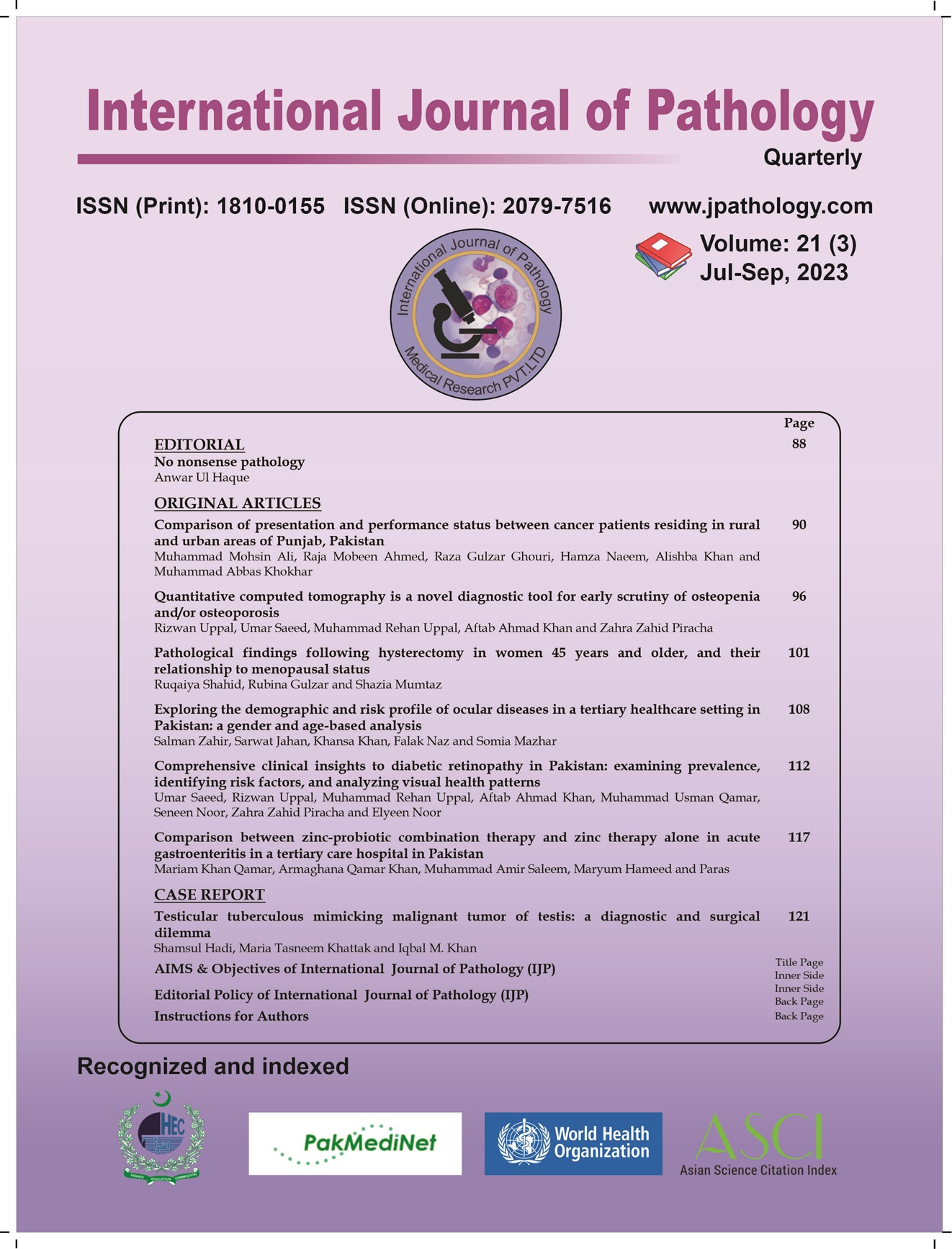Exploring the demographic and risk profile of ocular diseases in a tertiary healthcare setting in Pakistan: a gender and age-based analysis
Keywords:
Ocular Diseases, Cataract, Outpatient Department, Tertiary Care Hospital, PakistanAbstract
Background: Early diagnosis is necessary for most eye diseases to prevent blindness. Healthcare services should be tailored based on the prevalence and incidence of ophthalmic disease in that region. To investigate the prevalence of ophthalmic diseases among patients seeking treatment at a tertiary care hospital and to identify the risk factors associated with their development, with a focus on age and gender stratification.
Materials and Methods: This hospital-based cross-sectional study examined all patients who visited the outpatient department of ophthalmology at a tertiary care hospital between August and November 2022 (i.e., over a period of four months). Each participant provided voluntary verbal informed consent before being examined by an ophthalmologist and optometrist. Information about the patients was gathered using a Performa, and the data was later analyzed using MS Excel Spreadsheet and SPSS (Version 26).
Results: Two thousand ophthalmic patients (n=2000) (100%), whose ages ranged from 5 to >65 years, with a mean age of 50.44 + 17.08 years, were studied; 940(47%) males and 1060(53%) females. The distribution of ocular diseases identified via ophthalmological examinations showed that most prevalent ocular morbidity was cataract 450 (22.5%), followed by refractive errors 430 (21.5%). Other prevalent ocular diseases included pterygium 240 (12%), bacterial conjunctivitis 220 (11%), vernal kerato-conjunctivitis 180 (9%), glaucoma 120 (6%), and eyelid diseases 110 (5.5%). Reported significant risk factors for diagnosed eye disorders among study participants included aging, vitamin A deficient diet, excessive screen time, pollution, infections, past ocular disease, family history of eye diseases, poor hygiene, seasonal allergies, trauma, diabetes, and hypertension.
Conclusion: Prevalence of ocular diseases was higher in women than in men. The most prevalent ocular morbidity was cataract.
Downloads
Published
Issue
Section
License
Copyright (c) 2023 Salman Zahir; Sarwat Jahan, Khansa Khan, Falak Naz, Somia Mazhar

This work is licensed under a Creative Commons Attribution-NonCommercial 4.0 International License.
Readers may “Share-copy and redistribute the material in any medium or format” and “Adapt-remix, transform, and build upon the material”. The readers must give appropriate credit to the source of the material and indicate if changes were made to the material. Readers may not use the material for commercial purpose. The readers may not apply legal terms or technological measures that legally restrict others from doing anything the license permits.


